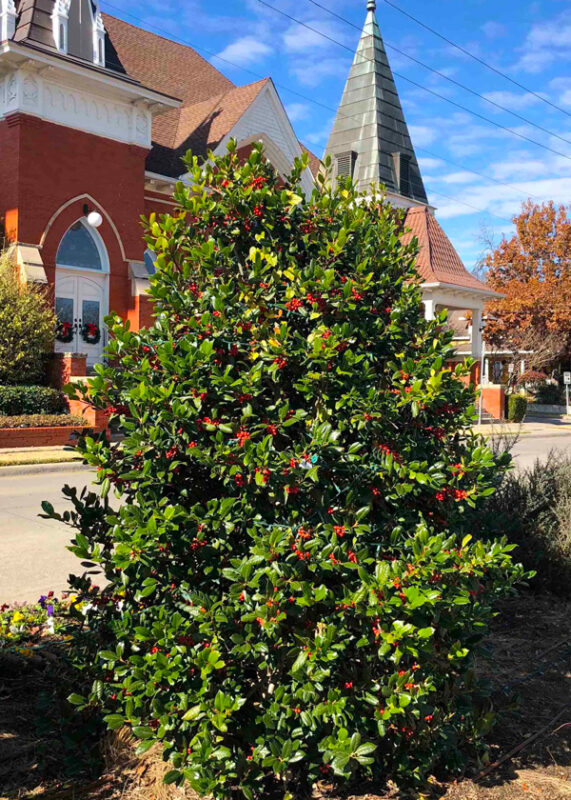Featured Plant: Nellie R. Stevens Holly
I love this shrub! I’ve grown it since September 1970 when nurseryman and friend Steve Dodd Sr. gave Lynn and me one as a housewarming gift as we moved to Texas. It would be the shrub I would have if I could have only one.
Here are its assets…
• Evergreen, with large, extremely deep green foliage. Spines are not especially “aggressive.”
• Grows to 15-20 ft. tall and 10-15 ft. wide but can be kept more compact with infrequent pruning.

• Outstanding plant for privacy and sound-deadening.
• The best possible replacement for redtip photinias that have died due to Entomosporium fungal leaf spot.
• Grows well in sun or shade.
• Winter-hardy to all of Texas, even through the horrible cold of February 2021.
• Suited to soils all across Texas.

• Each plant bears fruit without having to have a male plant nearby. Male and female flowers are borne on the same plant so pollination is assured.
• Bright red fruit holds on the branches all winter until flocks of robins and cedar waxwings strip them off in early spring.

• Readily available in nurseries year ‘round in a variety of pot sizes. Water by hand frequently for first two years to avoid drought damage. The new plants’ original potting soil will dry out more rapidly than the native soil that surrounds it. Sprinkler irrigation alone will not be sufficient.
As for the back story on how we almost missed ever having this great plant…
After growing this great holly for 40 years or longer I wondered how it originated. It took only a few moments of Web browsing before I found all the details.
Retired Extension horticulturist Gerald Klingaman of the University of Arkansas put it all out there for us to read 20 years ago. I think you’ll find his accounting most fascinating. Click here for the entire background.
